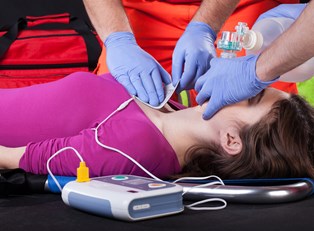Defibrillation is a common emergency treatment for addressing issues related to an irregular heartbeat. Defibrillating devices provide an electric shock to a patient’s heart, which effectively “resets” it and allows it to return to beating normally. There are two primary types of defibrillators, external and internal, and while both perform basically the same function, they go about it in different ways. Here is a quick comparison of these devices and what scenarios they are best for.
External Defibrillators
While people may be unfamiliar with the term “external defibrillator,” these devices are typically quite recognizable due to their frequent use in medical television programs and movies. Most commonly, external defibrillators are comprised of two electrified pads or paddles connected to the body of the device that generates the electrical charge. However, some external defibrillators have a vest instead of pads for easier use.
There are two primary types of external defibrillators—manual and automatic. Automatic external defibrillators (sometimes shortened as AEDs) are designed to be used by non-medical experts in emergency situations. These devices automatically analyze a victim’s heart rate and determine whether defibrillation is necessary or not. Many public areas have AED stations where they can quickly and easily be accessed by bystanders. On the other hand, manual external defibrillators do not analyze a person’s heart rate, and for this reason, are typically only used in hospitals and ambulances by medical professionals who can assess whether defibrillation is warranted.
Internal Defibrillators
Internal defibrillators function similarly to external ones, but these devices must be surgically implanted into a patient, at which point they can provide an electric shock to the patient immediately. This makes them a good choice for people who have a high risk of cardiac events. In some cases,an internal defibrillator may erroneously give a shock, and while this is uncomfortable for the patient, it typically does not pose any health risks.
The decision to install an internal defibrillator is normally decided on a case-by-case basis. However, there are some conditions that indicate to a doctor that a patient may be a good candidate for one. Some of these conditions include a recent heart attack, congenital heart disease, sudden cardiac arrest, or a heart arrhythmia. In most cases, the condition must be life-threatening before doctors will suggest an internal defibrillator, since it requires a potentially invasive procedure to install.



